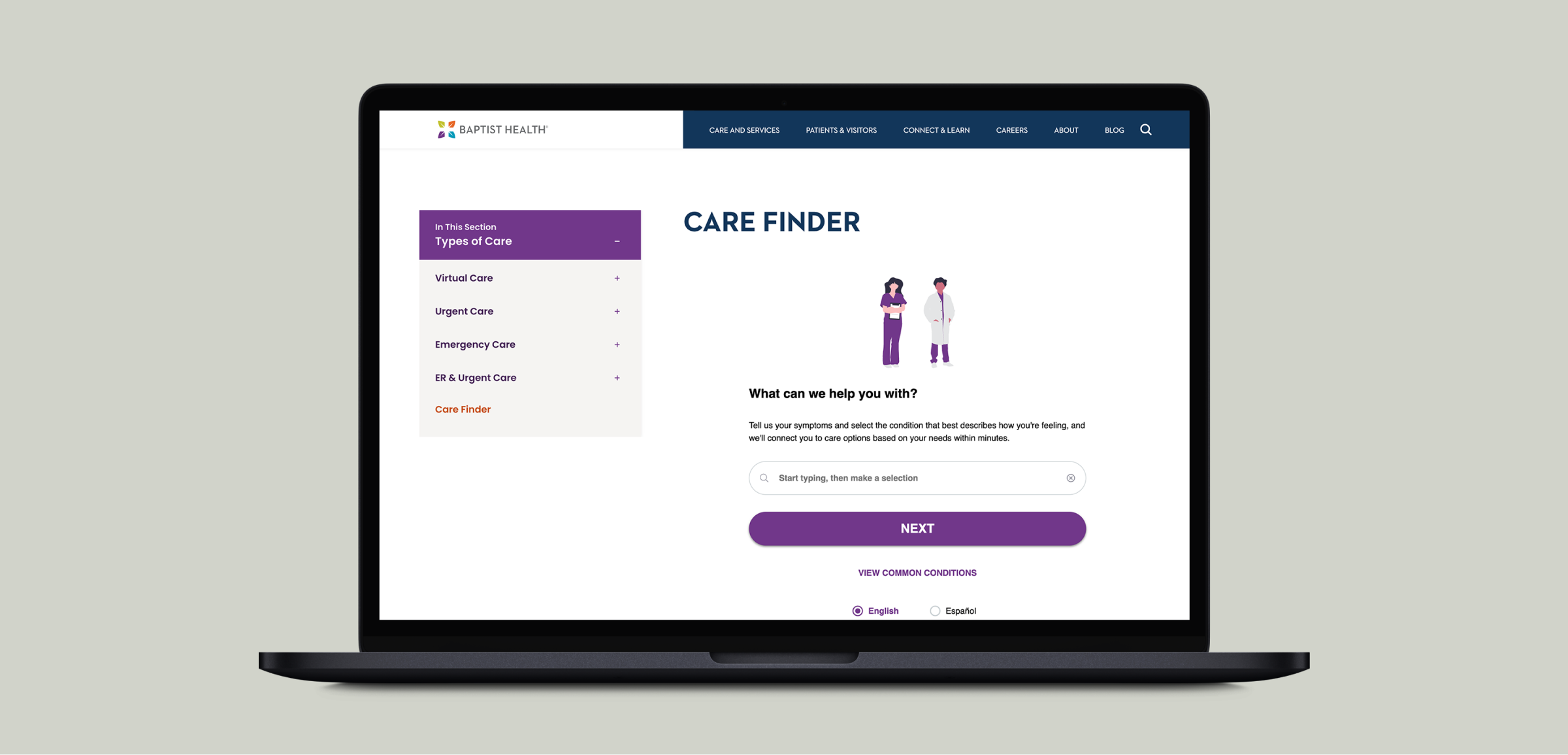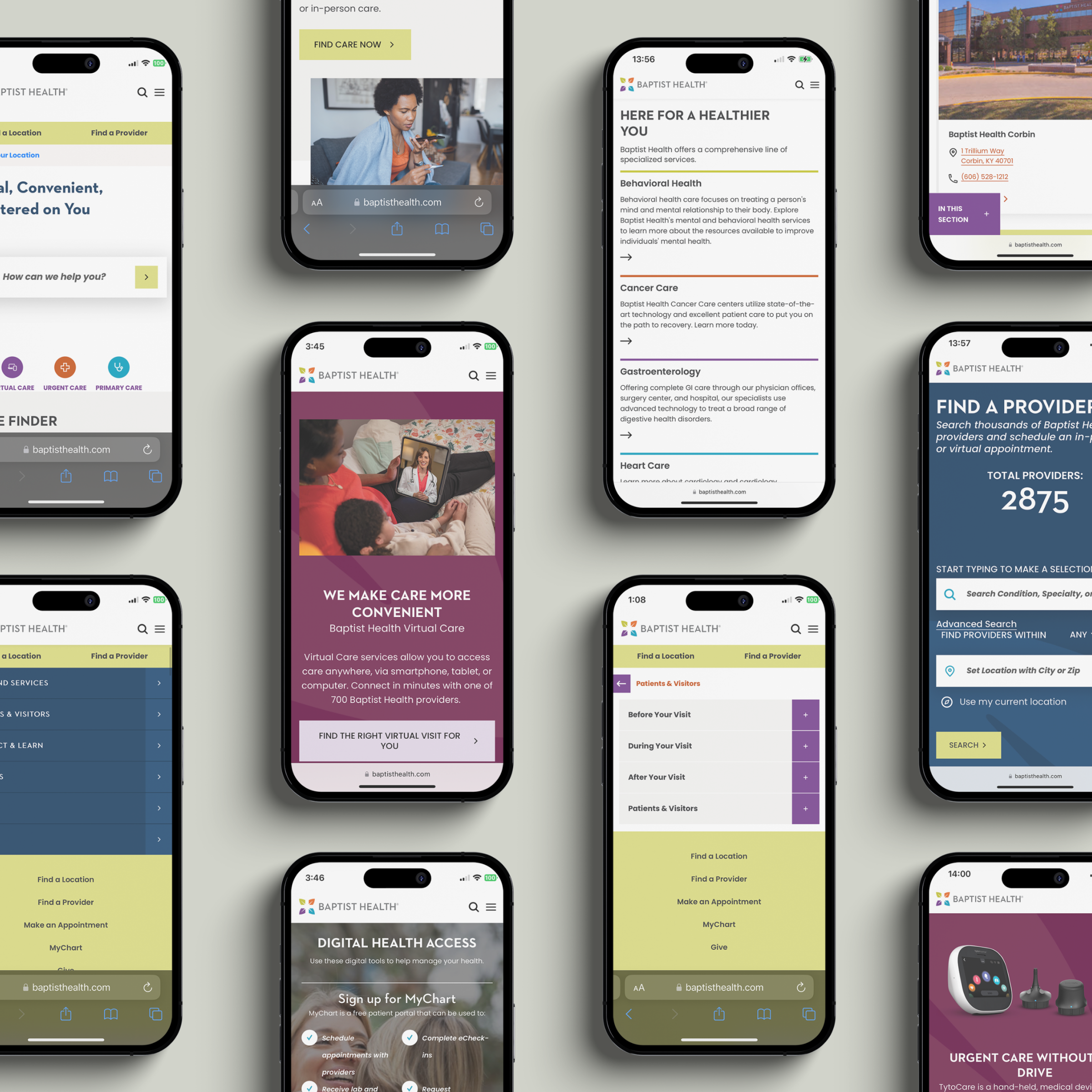For patients, the website for a single hospital can be complex and hard to navigate. If that hospital’s site lacks a coherent taxonomy, finding information about treatment areas or which specialists are available, and when, can be time-consuming.
Now, scale that frustration up to nine hospitals, 400-plus points of care and 5 million people.
Here is an example of what that might look like: A patient in Scottsburg, Indiana, needs to see a doctor about her osteoporosis. Baptist Health is within her insurance network, and there is a local Baptist Health clinic. But is there an osteopath there? Or should she check the Baptist Health Floyd hospital down in New Albany, which is a half-hour drive down I-65?
Baptist Health’s original network of websites would have made it difficult for this patient to get an answer. That’s the essential challenge Baptist Health asked us to solve.
That challenge had several complicating factors:
-
Patient digital experience expectations. Patients expect more from healthcare provider digital channels than they used to. People are used to seeing personalized content. People are used to convenience. They can track their pizza deliveries in real time, so why is it so hard to book a session with a physical therapist or find out how much a visit to the doctor will cost?
-
Disunity among service lines and locations. Many of the points of care in Baptist Health’s network did not begin as Baptist Health points of care. They joined the network over time. As such, many of their digital presences behaved as standalone entities. A local clinic and regional hospital could have operated under the same Baptist Health name for 10 years, but from a patient experience perspective there was nothing to facilitate a seamless handover from one to the other.
-
Geography. For patients in Appalachia, the closest point of care might not be the best place to send someone. A clinic 20 miles away along a state highway could be more accessible than a clinic 4 miles away along a winding local road.





